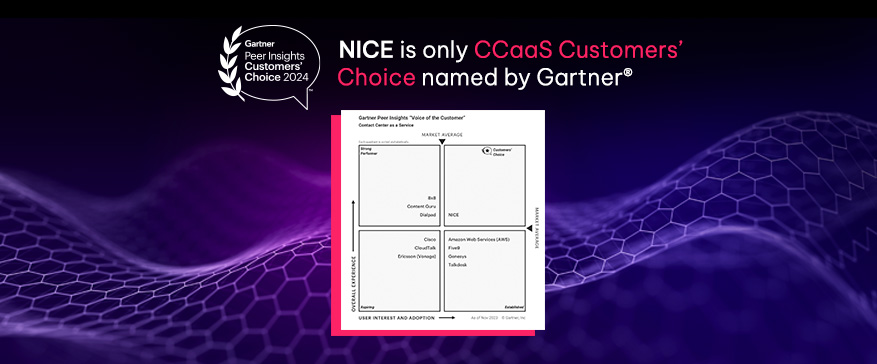From 80’s money machines to “banking in your pocket”
Around 1985, the very first bank machines rolled out in Canada. I’d recently opened my very first savings account. I remember the bank manager handing me a shiny plastic card that I could use in their new machines. Back then, we didn’t call them ATMs yet. I remember my bank named it the “JohnnyCash 24-hour Money Machine”. In fact, the musical legend himself – Mr. Johnny Cash – even did a few TV commercials for my bank back in the day! Whenever I needed a few dollars for the movies, I’d ride my bike across town to the “money machine”. Fast-forward 30-odd years and there’s a new service innovation I’ve noticed. It’s the way my bank authenticates me for security whenever I call. Sadly, I have a bad habit of losing my ATM bank card…. yes, it happens to me a couple times per year! So, here’s what happens: I explain what happened to the conversational IVR and then I’m immediately transferred to an agent who greets me by my first name and arranges for a replacement card to be sent. It’s fast and convenient: The whole interaction takes just a few minutes, and there’s no annoying questions to answer – “What’s the maiden name of your first pet?” – because my financial institution uses the best contact center software to instantly verify customers via voice biometrics. Today, most of my banking needs fit in my pocket. I can transfer funds, donate money, invest in the stock market, apply for credit, and even deposit an occasional old-style check – without stepping foot in a bank or depending on access to a physical machine. While it’s fun to reminisce, today’s conveniences sure beat the old days biking across town to get cash. And who knows, with rumors of coin shortages and a cashless economy, will we even need cash? (Well, we’ll always have Johnny Cash!)Staying one step ahead
Just like ATM machines and voice biometrics changed the way we bank, today’s consumers have more options than ever for engaging with organizations of all types – including government, public services, and private businesses. And while it’s true that so much of our environment is in flux these days, the mission of customer service teams remains steady. Organizations of all sizes need to do more with less to support customers who are expecting more from them than ever before. The financial services industry is no exception – and it’s not slowing down anytime soon. As the world’s population ages and average life expectancy increases, the asset and wealth management sector is set to capitalize on retirement plans. In fact, PWC predicted global assets under management to reach trillions of dollars by 2025. With the industry at a tipping point – and firms competing to retain the best advisors and entice new clients – voice and digital services are helping financial services teams stay engaged 24/7. To stay one step ahead, many firms are shifting their focus to customer experience (CX).. Although operational efficiency and profitability are still top of the list, rising customer expectations and pressure from the competition have meant CX (and everything that goes with it), needs to be considered from a strategic perspective.Innovation drives significant and immediate change
LPL Financial recently saw a dramatic impact on their business by shifting their focus to improving CX. As the largest independent broker-dealer in the U.S., LPL Financial serves 17,000 Financial Advisors, helping them deliver brokerage and investment services to their clients. Before transitioning their CC operations to the cloud, their IVR experience was time-consuming and frustrating. Their legacy system didn’t support skills-based routing, which made it difficult to connect clients with the right agents and resulted in high transfer rates – as high as 25% for some. Some clients had even resorted to creating their own “cheat sheets” with the correct button sequence they needed to press to connect them with the appropriate team. Unfortunately, an overly complicated IVR is still a common problem that many businesses are guilty of… I’ve heard some industry experts call it “IVR fatigue”!LPL Financial drove significant CX improvements with skills-based routing. With the CXone IVR, additional routing options were created to allow agents to specialize in specific areas. Now clients are quickly routed to the agents who can best help them. And LPL’s business is reaping the benefits: Transfer rates fell by 25%, First Contact Resolution (FCR) increased around 10%, and customer satisfaction got a significant boost. Read more in their case study -- plus, you can register for Interactions Live to hear more on how LPL Financial continues to innovate their services with conversational AI chatbots.Digital channels for the win!
According to the latest consumer data, most generational consumers prefer communicating via digital channels. Why? Because digital communications through private social messaging apps, online chat, and email are easiest for consumers to use.
- 49% of Gen X prefer digital channels as their channel of choice
- 84% of Millennials use digital channels as their channel of choice, with only 16% preferring voice
- Baby boomers are the only generation that prefer voice to digital channels
3 ways digital helps build brand confidence
When it comes to boosting consumer confidence, here are 3 ways adopting a digital CX approach is good for your business and your brand – with takeaway tips for you to consider for your own business strategy.#1 Meeting high service expectations
What’s the most common reason that consumers cite for closing their accounts? Poor customer experience – even more so than fees, rates, locations, and convenience.With contact centers expected to handle increasing contacts volumes with greater complexity than ever, it’s critical to keep up with ever-increasing expectations. But there’s no need for call centers to chase their SLAs handling voice interactions off in a silo! Instead, contact centers can meet customers where they are.Phone, chatbots, and online chat with a live representative have the best First Contact Resolution (FCR). So, while customers are using AI voice and chat bots more, almost half of them will transfer from bot to agent before the chat’s over. The key to success (and greater FCR) is a seamless hand-off to live assistance with an agent. Make it personal by integrating CRM data and make it easy for agents by providing a unified interface that orchestrates it all, to keep agents one step ahead without having to hop between screens.Tip: Keep channel hoppers happy. Make it easy for customers to move conversations across channels & pick up where they left off.#2 Building loyalty
Simplify their lives & your customers will reward you! Great service can build brand loyalty among 81% of customers & turn 87% of them into advocates. And with half of consumers wanting companies to allow them to interact with their customer service reps using private social messaging apps, this is really a sweet spot for many businesses to be. Today’s up-and-coming and most influential consumers – Millennials and Generation Z (ages 18-38) – are driving the modern customer experience. They are flexing their spending muscles and quickly becoming dominant consumer groups. Our CX benchmark research showed 90% Gen Z uses digital channels as their channel of choice, with only 10% choosing voice. As these “digital natives” mature and continue to push for only the very best experiences, their opinions and preferences become increasingly important. In fact, they are establishing the course for the future.








